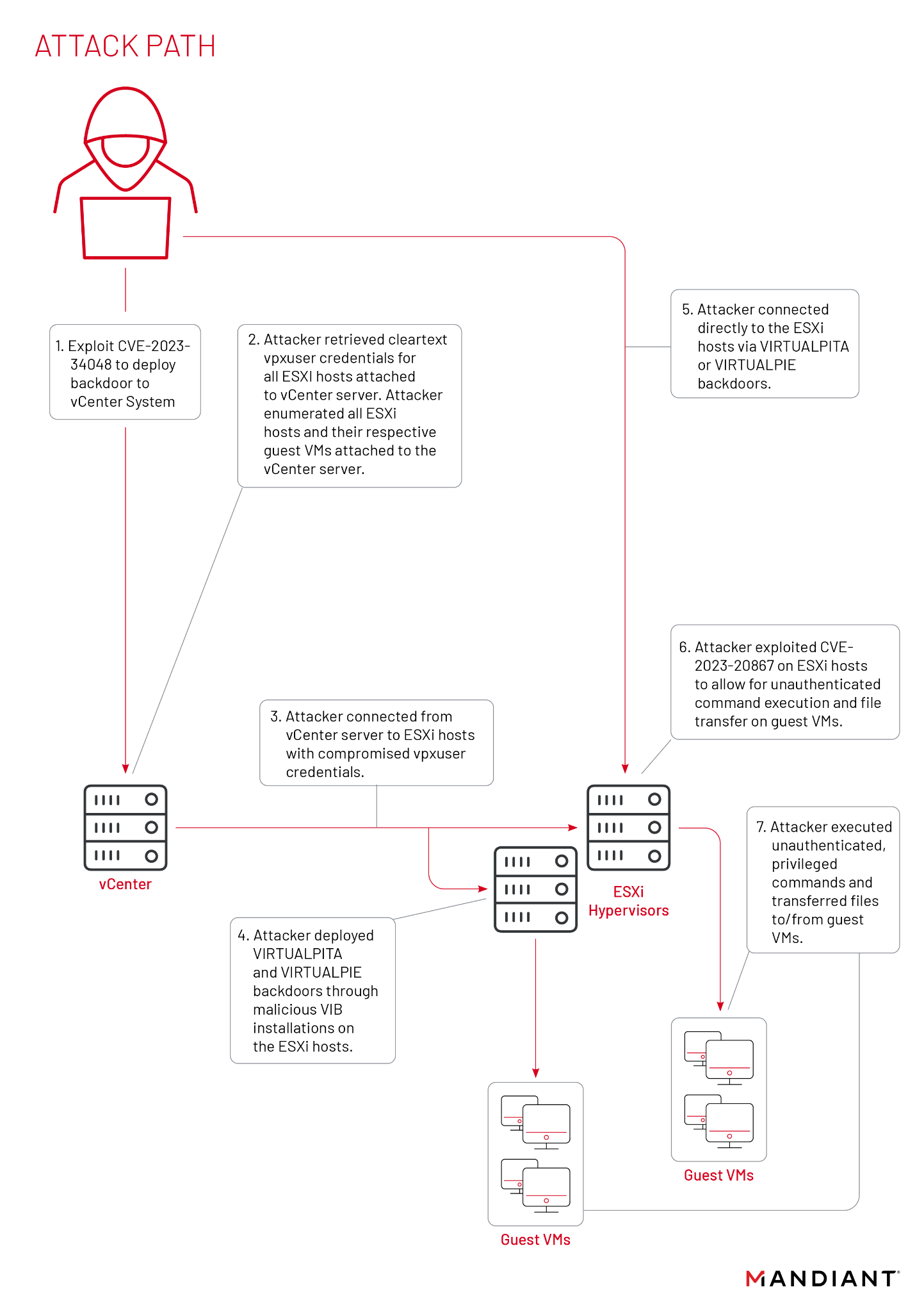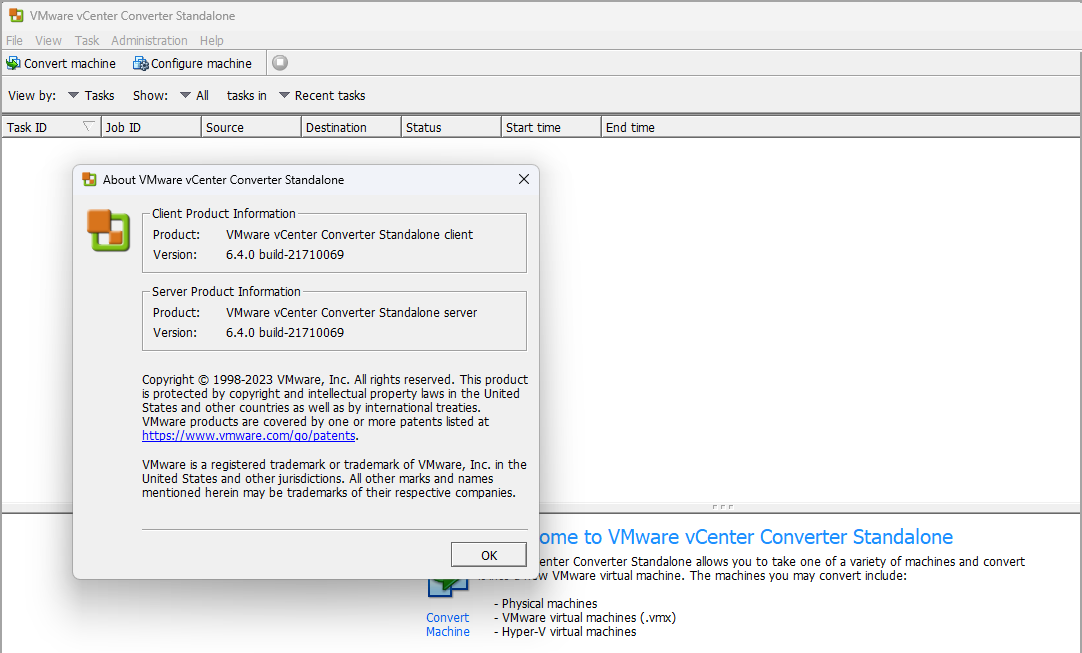VMware vSphere 4.1 released today!
Today VMware released the newest version of vSphere, version 4.1 🙂
Whats new:
Scripted Install for ESXi. Scripted installation of ESXi to local and remote disks allows rapid deployment of ESXi to many machines. You can start the scripted installation with a CD-ROM drive or over the network by using PXE booting.
vSphere Client Removal from ESX/ESXi Builds. For ESX and ESXi, the vSphere Client is available for download from the VMware Web site. It is no longer packaged with builds of ESX and ESXi.
Boot from SAN. vSphere 4.1 enables ESXi boot from SAN (BFN). iSCSI, FCoE, and Fibre Channel boot are supported.
Hardware Acceleration with vStorage APIs for Array Integration (VAAI). ESX can offload specific storage operations to compliant storage hardware. With storage hardware assistance, ESX performs these operations faster and consumes less CPU, memory, and storage fabric bandwidth.
Storage Performance Statistics. vSphere 4.1 offers enhanced visibility into storage throughput and latency of hosts and virtual machines, and aids in troubleshooting storage performance issues. NFS statistics are now available in vCenter Server performance charts, as well as esxtop. New VMDK and datastore statistics are included. All statistics are available through the vSphere SDK.
Storage I/O Control. This feature provides quality-of-service capabilities for storage I/O in the form of I/O shares and limits that are enforced across all virtual machines accessing a datastore, regardless of which host they are running on. Using Storage I/O Control, vSphere administrators can ensure that the most important virtual machines get adequate I/O resources even in times of congestion.
iSCSI Hardware Offloads. vSphere 4.1 enables 10Gb iSCSI hardware offloads (Broadcom 57711) and 1Gb iSCSI hardware offloads (Broadcom 5709).
Network I/O Control. Traffic-management controls allow flexible partitioning of physical NIC bandwidth between different traffic types, including virtual machine, vMotion, FT, and IP storage traffic (vNetwork Distributed Switch only).
IPv6 Enhancements. IPv6 in ESX supports Internet Protocol Security (IPsec) with manual keying.
Load-Based Teaming. vSphere 4.1 allows dynamic adjustment of the teaming algorithm so that the load is always balanced across a team of physical adapters on a vNetwork Distributed Switch.
E1000 vNIC Enhancements. E1000 vNIC supports jumbo frames in vSphere 4.1.
Windows Failover Clustering with VMware HA. Clustered Virtual Machines that utilize Windows Failover Clustering/Microsoft Cluster Service are now fully supported in conjunction with VMware HA.
VMware HA Scalability Improvements. VMware HA has the same limits for virtual machines per host, hosts per cluster, and virtual machines per cluster as vSphere.
VMware HA Healthcheck and Operational Status. The VMware HA dashboard in the vSphere Client provides a new detailed window called Cluster Operational Status. This window displays more information about the current VMware HA operational status, including the specific status and errors for each host in the VMware HA cluster.
VMware Fault Tolerance (FT) Enhancements. vSphere 4.1 introduces an FT-specific versioning-control mechanism that allows the Primary and Secondary VMs to run on FT-compatible hosts at different but compatible patch levels. vSphere 4.1 differentiates between events that are logged for a Primary VM and those that are logged for its Secondary VM, and reports why a host might not support FT. In addition, you can disable VMware HA when FT-enabled virtual machines are deployed in a cluster, allowing for cluster maintenance operations without turning off FT.
DRS Interoperability for VMware HA and Fault Tolerance (FT). FT-enabled virtual machines can take advantage of DRS functionality for load balancing and initial placement. In addition, VMware HA and DRS are tightly integrated, which allows VMware HA to restart virtual machines in more situations.
Enhanced Network Logging Performance. Fault Tolerance (FT) network logging performance allows improved throughput and reduced CPU usage. In addition, you can use vmxnet3 vNICs in FT-enabled virtual machines.
Concurrent VMware Data Recovery Sessions. vSphere 4.1 provides the ability to concurrently manage multiple VMware Data Recovery appliances.
vStorage APIs for Data Protection (VADP) Enhancements. VADP now offers VSS quiescing support for Windows Server 2008 and Windows Server 2008 R2 servers. This enables application-consistent backup and restore operations for Windows Server 2008 and Windows Server 2008 R2 applications.
vCLI Enhancements. vCLI adds options for SCSI, VAAI, network, and virtual machine control, including the ability to terminate an unresponsive virtual machine. In addition, vSphere 4.1 provides controls that allow you to log vCLI activity.
Lockdown Mode Enhancements. VMware ESXi 4.1 lockdown mode allows the administrator to tightly restrict access to the ESXi Direct Console User Interface (DCUI) and Tech Support Mode (TSM). When lockdown mode is enabled, DCUI access is restricted to the root user, while access to Tech Support Mode is completely disabled for all users. With lockdown mode enabled, access to the host for management or monitoring using CIM is possible only through vCenter Server. Direct access to the host using the vSphere Client is not permitted.
Access Virtual Machine Serial Ports Over the Network. You can redirect virtual machine serial ports over a standard network link in vSphere 4.1. This enables solutions such as third-party virtual serial port concentrators for virtual machine serial console management or monitoring.
vCenter Converter Hyper-V Import. vCenter Converter allows users to point to a Hyper-V machine. Converter displays the virtual machines running on the Hyper-V system, and users can select a powered-off virtual machine to import to a VMware destination.
Enhancements to Host Profiles. You can use Host Profiles to roll out administrator password changes in vSphere 4.1. Enhancements also include improved Cisco Nexus 1000V support and PCI device ordering configuration.
Unattended Authentication in vSphere Management Assistant (vMA). vMA 4.1 offers improved authentication capability, including integration with Active Directory and commands to configure the connection.
Updated Deployment Environment in vSphere Management Assistant (vMA). The updated deployment environment in vMA 4.1 is fully compatible with vMA 4.0. A significant change is the transition from RHEL to CentOS.
vCenter Orchestrator 64-bit Support. vCenter Orchestrator 4.1 provides a client and server for 64-bit installations, with an optional 32-bit client. The performance of the Orchestrator server on 64-bit installations is greatly enhanced, as compared to running the server on a 32-bit machine.
Improved Support for Handling Recalled Patches in vCenter Update Manager. Update Manager 4.1 immediately sends critical notifications about recalled ESX and related patches. In addition, Update Manager prevents you from installing a recalled patch that you might have already downloaded. This feature also helps you identify hosts where recalled patches might already be installed.
License Reporting Manager. The License Reporting Manager provides a centralized interface for all license keys for vSphere 4.1 products in a virtual IT infrastructure and their respective usage. You can view and generate reports on license keys and usage for different time periods with the License Reporting Manager. A historical record of the utilization per license key is maintained in the vCenter Server database.
Power Management Improvements. ESX 4.1 takes advantage of deep sleep states to further reduce power consumption during idle periods. The vSphere Client has a simple user interface that allows you to choose one of four host power management policies. In addition, you can view the history of host power consumption and power cap information on the vSphere Client Performance tab on newer platforms with integrated power meters.
Reduced Overhead Memory. vSphere 4.1 reduces the amount of overhead memory required, especially when running large virtual machines on systems with CPUs that provide hardware MMU support (AMD RVI or Intel EPT).
DRS Virtual Machine Host Affinity Rules. DRS provides the ability to set constraints that restrict placement of a virtual machine to a subset of hosts in a cluster. This feature is useful for enforcing host-based ISV licensing models, as well as keeping sets of virtual machines on different racks or blade systems for availability reasons.
Memory Compression. Compressed memory is a new level of the memory hierarchy, between RAM and disk. Slower than memory, but much faster than disk, compressed memory improves the performance of virtual machines when memory is under contention, because less virtual memory is swapped to disk.
vMotion Enhancements. In vSphere 4.1, vMotion enhancements significantly reduce the overall time for host evacuations, with support for more simultaneous virtual machine migrations and faster individual virtual machine migrations. The result is a performance improvement of up to 8x for an individual virtual machine migration, and support for four to eight simultaneous vMotion migrations per host, depending on the vMotion network adapter (1GbE or 10GbE respectively).
ESX/ESXi Active Directory Integration. Integration with Microsoft Active Directory allows seamless user authentication for ESX/ESXi. You can maintain users and groups in Active Directory for centralized user management and you can assign privileges to users or groups on ESX/ESXi hosts. In vSphere 4.1, integration with Active Directory allows you to roll out permission rules to hosts by using Host Profiles.
Configuring USB Device Passthrough from an ESX/ESXi Host to a Virtual Machine. You can configure a virtual machine to use USB devices that are connected to an ESX/ESXi host where the virtual machine is running. The connection is maintained even if you migrate the virtual machine using vMotion.
Improvements in Enhanced vMotion Compatibility. vSphere 4.1 includes an AMD Opteron Gen. 3 (no 3DNow!) EVC mode that prepares clusters for vMotion compatibility with future AMD processors. EVC also provides numerous usability improvements, including the display of EVC modes for virtual machines, more timely error detection, better error messages, and the reduced need to restart virtual machines.
vCenter Update Manager Support for Provisioning, Patching, and Upgrading EMC’s ESX PowerPath Module. vCenter Update Manager can provision, patch, and upgrade third-party modules that you can install on ESX, such as EMC’s PowerPath multipathing software. Using the capability of Update Manager to set policies using the Baseline construct and the comprehensive Compliance Dashboard, you can simplify provisioning, patching, and upgrade of the PowerPath module at scale.
User-configurable Number of Virtual CPUs per Virtual Socket. You can configure virtual machines to have multiple virtual CPUs reside in a single virtual socket, with each virtual CPU appearing to the guest operating system as a single core. Previously, virtual machines were restricted to having only one virtual CPU per virtual socket.
Expanded List of Supported Processors. The list of supported processors has been expanded for ESX 4.1. Among the supported processors is the Intel Xeon 7500 Series processor, code-named Nehalem-EX (up to 8 sockets).
Source: VMware
Try now: VMware



Now lets see if I can do something with it.